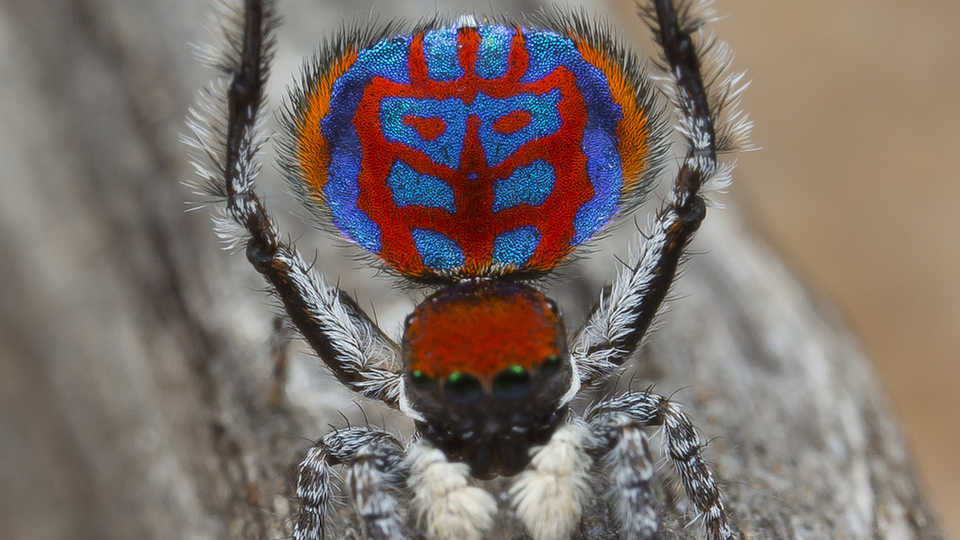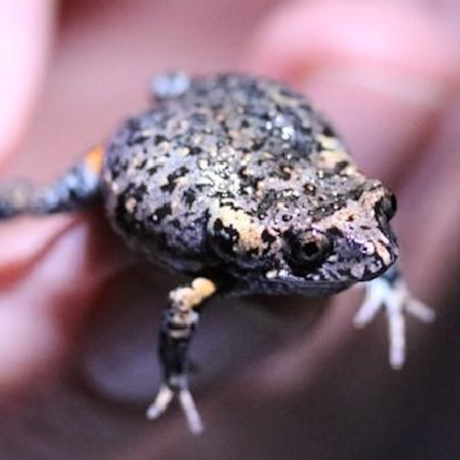Science News
New Discoveries: A Judicial Mantis, Spiky Tomato, and Peacock Spiders
New Discoveries is a collaboration between Stanford and Academy scientists and staff, appearing on the second and fourth Wednesdays of every month. Here we celebrate newly described species and demonstrate how much more there is to learn about life on Earth.
The Mantis RBG
In the past, scientists have used only male genitalia when classifying insect species. But scientist Sydney Brannoch didn’t think this practice was right. “As a feminist biologist, I often questioned why female specimens weren’t used to diagnose most species,” she explains. So she decided to do something about it. She and her colleagues examined 30 praying mantis specimens from three museums, analyzing the geographic distribution, external features, and both male and female genital characters of the mantises. They found that the female genital characters alone could define the species and, in the process, identified a new species, Ilomantis ginsburgae.
The Madagascar insect is named for Supreme Court Justice Ruth Bader Ginsburg, apt because of her relentless fight for gender equality, and also for the Justice’s appreciation of the jabot, a decorative neck accessory, which resembles the neck plate of the new mantis. Says Brannoch, “It is my hope that our work not only sets a precedent in taxonomy but also underscores the need for scientists to investigate and equally consider both sexes in other scientific investigations.”
Horror-Film Tomato
“There is a wealth of museum material just waiting to be given names—and, of course, the organisms represented by those specimens await that recognition, as well as the attention and protection that come with it.” So Bucknell University’s Chris Martine took a museum specimen, a spiky tomato plant from the Australian Outback, to a group of 7th graders in Pennsylvania for their help with naming the new species.
Not only does this tomato look inedible from its spiky exterior, but the fruit remains extremely hard when it’s ripe. Unripe, the fruit is greenish-white, and when it’s cut open, the tomato starts to “bleed” juice that turns red as it’s exposed to air. So the middle schoolers settled on a name that means bone (ossi, for the dry and bone-hard mature fruit) and blood (cruentum), Solanum ossicruentum. The new species is published in PhytoKeys.
Silver Boa
While the two new species above were described from museum collections, Chilabothrus argentum, the silver boa, is described from an expedition to the Bahamas in July of 2015. The scientists encountered a beautiful one-meter (three-foot) long female climbing a silver palm tree near dusk, and collectively gasped when they saw the snake. It was the first new species of boa found in the Caribbean since the 1940s. That night, as the team slept, another silver boa crawled down from the forest, across the beach, and directly onto one of the researchers’ heads. The discovery was meant to be! Although newly recognized, the silver boa is already threatened by feral cats on the island. The authors are working to create conservation measures—with the cooperation of local organizations—to protect these snakes.
Iridescent Peacock Spiders
Researchers Jürgen Otto and David Knowles hit the spider jackpot recently with seven new species they described from Western Australia. The brightest of the bunch is a blue and red beauty they named Maratus bubo (for “owl”), because of the pattern of coloration. They named another for the word “wasp” in Latin: Maratus vespa. Like other peacock spiders, these jumping species dance as part of their mating rituals. (Some people do this, too.) Otto and Knowles’s treasures are described in the May 22 volume of the journal Peckhamia.
Image(s): Peacock spiders, Jürgen Otto; Tomato, J.T. Cantley





